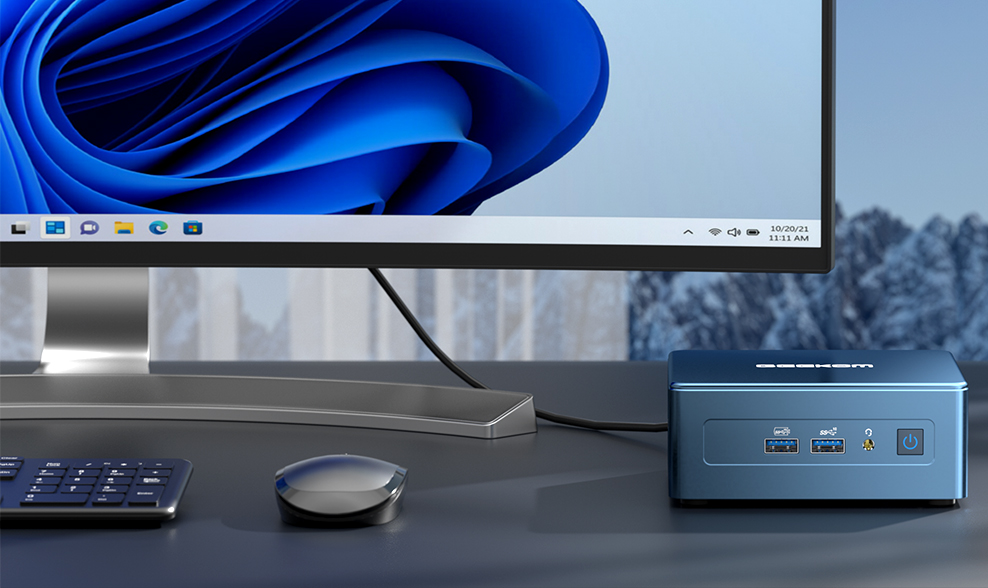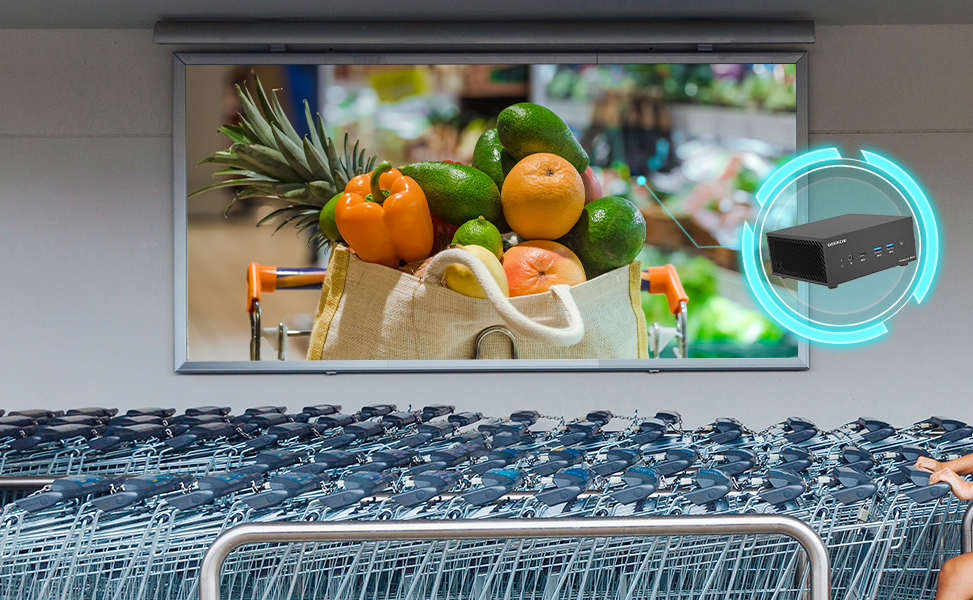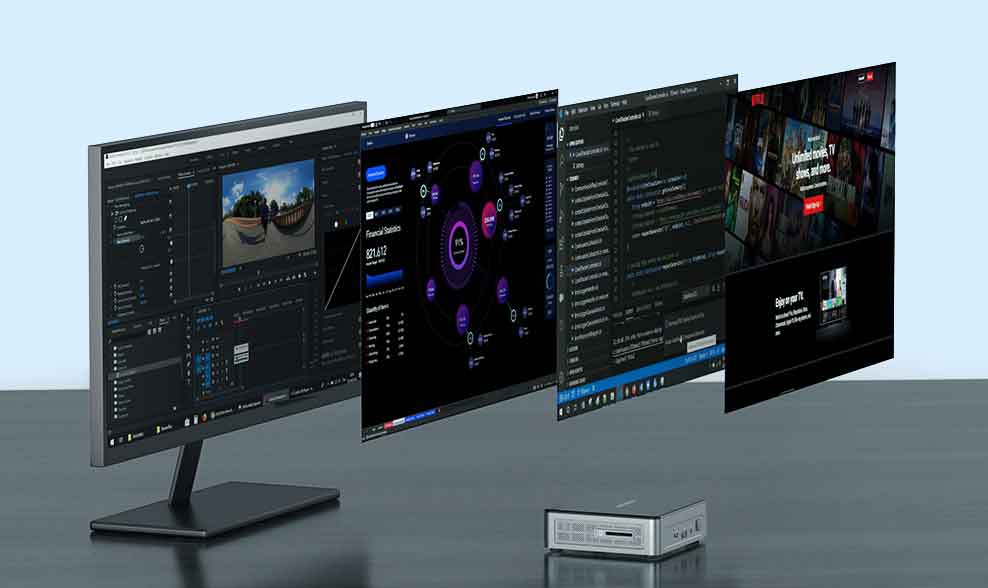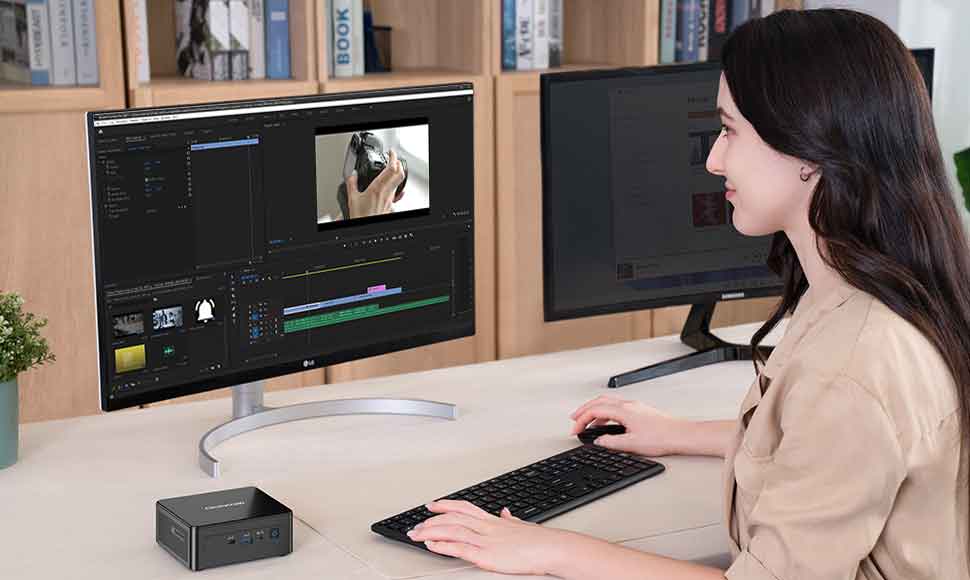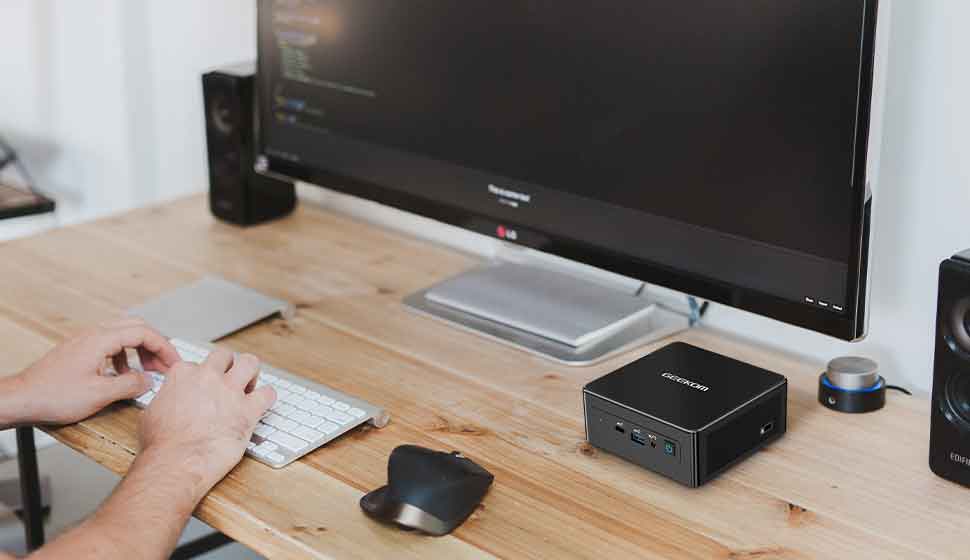“Digital signage” is when companies use high-resolution screens to display advertisements and other video content in a way that stimulates viewers' interest in their product. But how exactly do they manage to keep these ads on the screen and repeating on a loop?
Well, they use one Digital signage playerto view this video advertisement again and again.
But first, let's learn how to choose the best device for you.
Choosing a suitable digital signage player
If you need a digital signage media player that can run multiple types of content at the same time, you can opt for a PC-based solution. A PC-based player is often more powerful and can accommodate future growth.
Another option for “digital signage” is an Android-based player. These players are usually inexpensive and use very little power. Devices with very reasonable specifications are available for under €100.
Other popular options for “digital signage media players” include Chromeboxes and Chromebits. These are similar to conventional players, but run on Google's Chrome OS and are cheaper.
While some TV sticks can also meet your needs, they may be limited by their processing power. In these cases you should have one Mini PC take into consideration.
Why use a mini PC as a “digital signage player”?
Mini PCs are very compact and affordable. For just $400 you can purchase a digital signage device that you can attach directly to the back of your monitor where you can't even see it.
They are so quiet that you can hardly notice them, are energy efficient and can last for days or weeks run without much power and without interruption.
They use around 10x less power than a conventional desktop PC, but are also extremely powerful. Many mini PCs can support 4K high-definition videos without any problems or skipping, even when used for a long time.
Which configurations are important for “digital signage”?
There are certain things you should pay attention to when choosing a mini PC for digital signage. Your “digital signage player” must be powerful enough to continuously run intensive “digital signage applications” for days.
Even if you are looking for something cheap and affordable, you still need to make sure that the device is powerful enough to do what you bought it for. The last thing you want is for your “digital signage” to become distorted or perhaps even turn off completely while a potential customer is looking at it.
Let's take a look at some of these configurations:
- Supports 4K – Your digital signage will represent your business to thousands of potential buyers. Your videos need to be in high 4K video quality to attract people's attention. People are attracted to things that look larger than life, so they need to stand out. So, you should choose a “digital signage PC” that can handle 4K videos. Since many Mini PCs only handle up to 720p, it is extremely important when choosing your Mini PC for digital signage that it can support 4K.
- A wealth of interfaces – You probably have several screens that you want to use for digital signage without purchasing multiple devices for them. Therefore, you should choose a mini PC that has a wealth of interfaces to support multiple screens. Some mini PCs can support up to 4 screens at the same time. So you can connect all 4 screens to one device and even display different “digital signage” on each screen. Or you can place all 4 screens together and have a huge display that is sure to attract many potential customers.
- Graphics processor – Not only is it important to have a mini PC that supports 4K and also has a wealth of interfaces, but it must also be able to smoothly process up to four 4K screens at the same time. Therefore, make sure that the “digital signage PC” you buy has at least an Intel Iris Plus Graphics 655 GPU. This is one of the most powerful GPUs ever invented and is actually used in many traditional desktop PCs. This GPU is powerful enough to handle intense, high-quality videos across multiple screens.
- CPU and RAM – A fast and powerful CPU will be able to push your graphics processor to its full potential. A large amount of RAM ensures your high-quality digital signage runs continuously without skipping or stopping. You should therefore make sure that you get a mini PC with at least an Intel i5 CPU and 8GB of RAM so that your computer is powerful enough to give your graphics processor the additional processing resources and to continuously deliver high 4K video quality to be able to.
Recommended digital signage PCs
Below we recommend some mini PCs for use as “digital signage players”:
Mini iT8
The Mini iT8 is an extremely powerful digital signage mini PC that features an Intel i5 processor, up to 16 GB of RAM and an Intel Iris Plus Graphics 655 graphics processor. It comes with a pre-installed copy of Windows 11 Pro delivered, so you don't have to worry about installing an operating system. It is a very compact and lightweight system that includes a VESA mount so you can mount the mini PC directly on the back of a monitor or TV screen. The IT8 has a wealth of outputs and supports up to 4 high quality screens. It retails for €399.
Intel NUC 8
The Intel NUC 8 Mini PC is also quite suitable for “digital signage” and also has an Intel i5 processor, 8 GB of RAM and an AMD graphics card. It comes with a copy of Windows 10 installed, is about the same size as the Mini iT8, and can also be mounted on the back of a screen. It is equipped with a large number of inputs and supports up to 3 screens at the same time. It costs €610.
Mini iT8 vs Intel NUC 8
The Mini iT8 will offer you the best value for money. For just €399, it has many more features than the NUC 8 for a whopping €610. The iT8 can serve up to 4 screens, while the NUC 8 can only serve 3. The iT8 comes with Windows 11, while the NUC 8 only has Windows 10. For just €70 extra, the iT8 can be delivered with 16 GB of RAM, but the NUC 8 only comes with 8 GB of RAM. All in all, the Mini iT8 is a superior one “Digital Signage PC” be at a much lower price.

